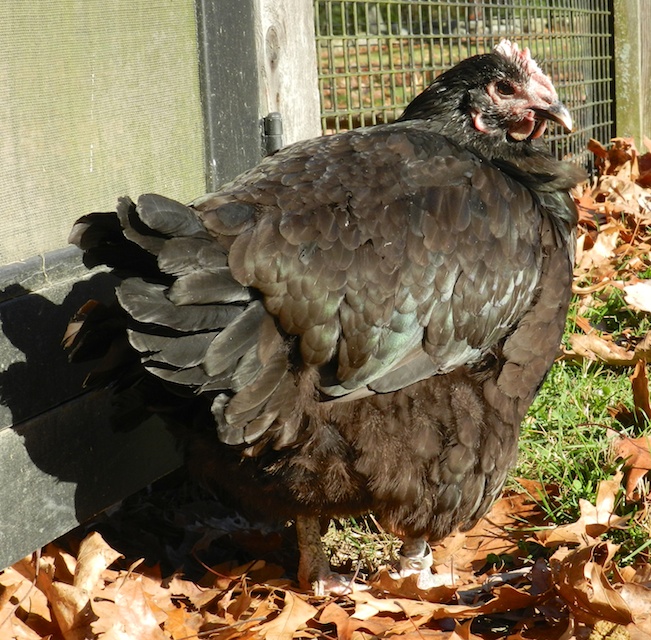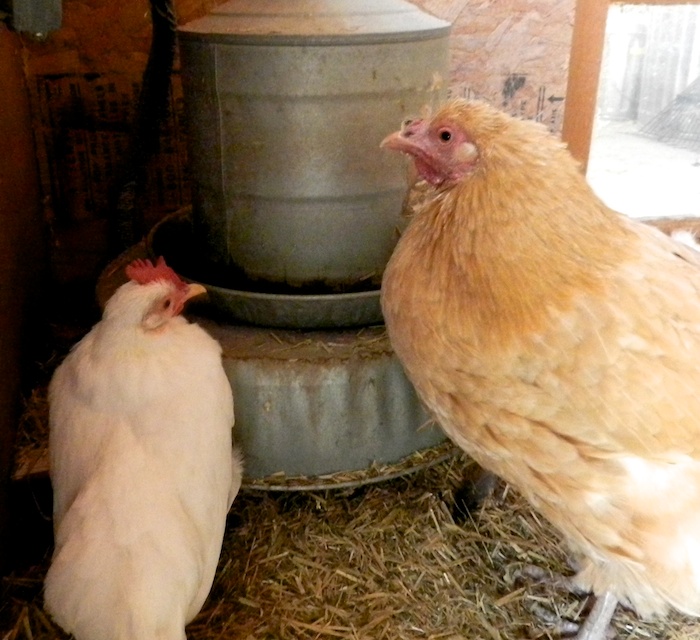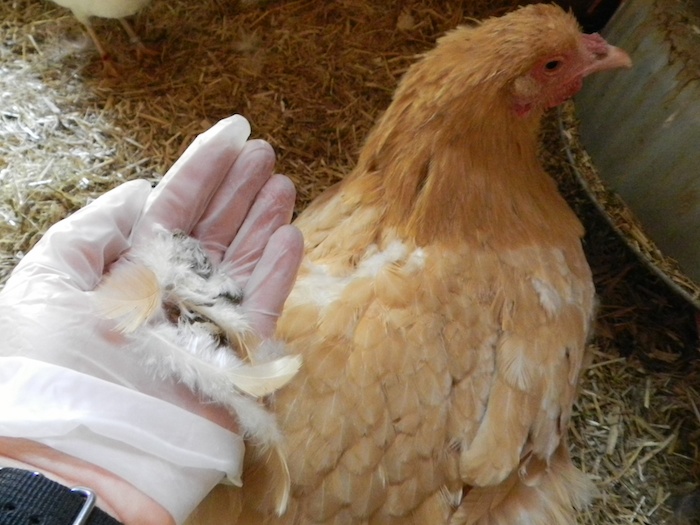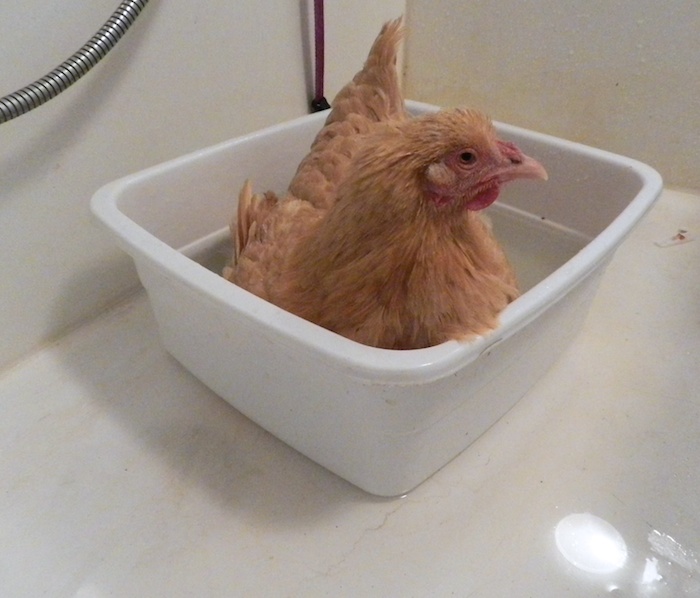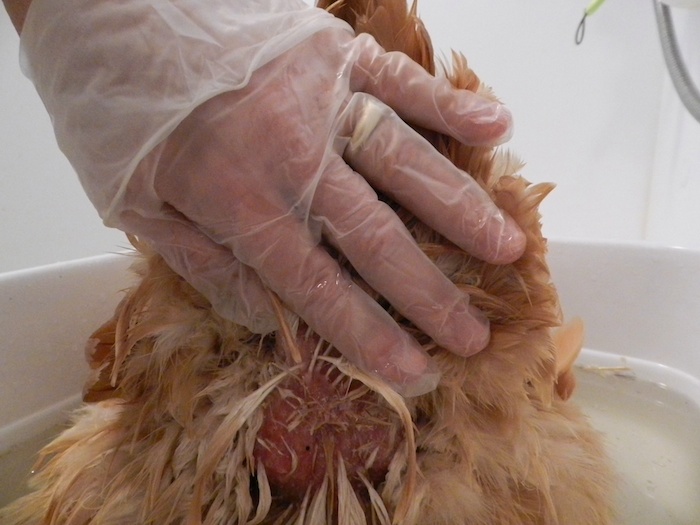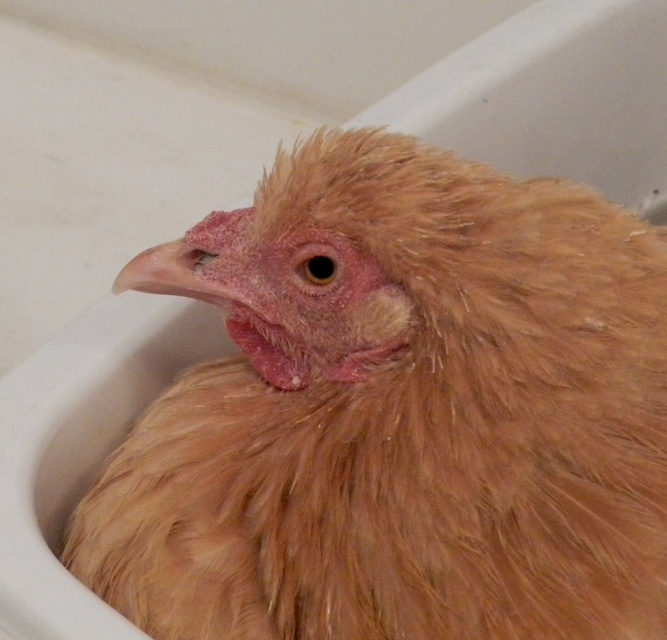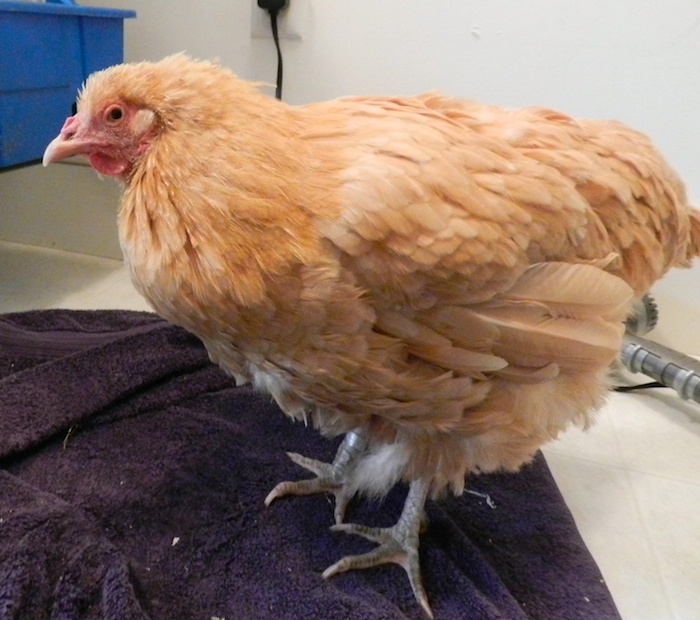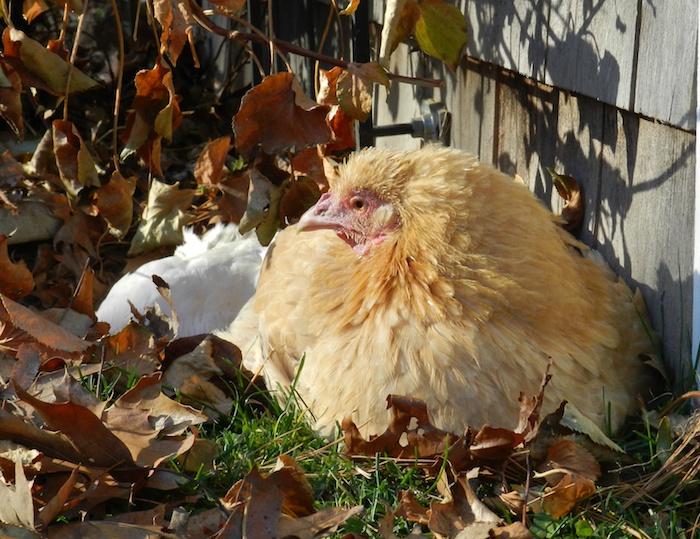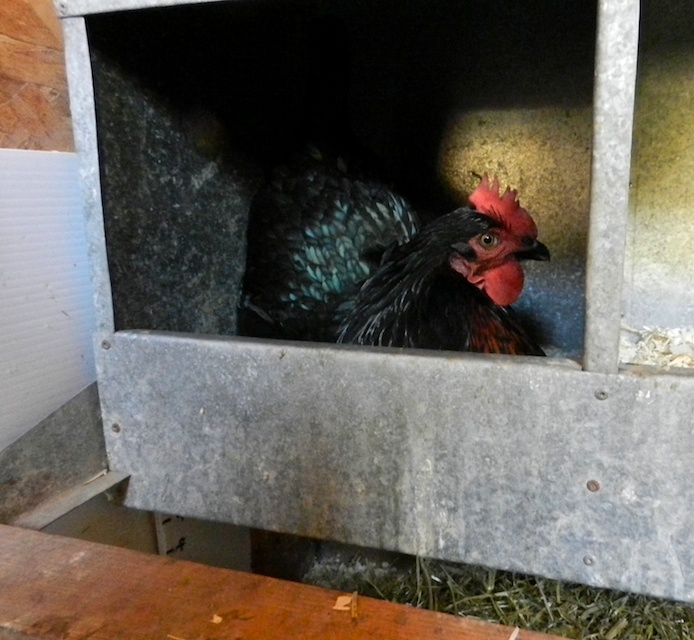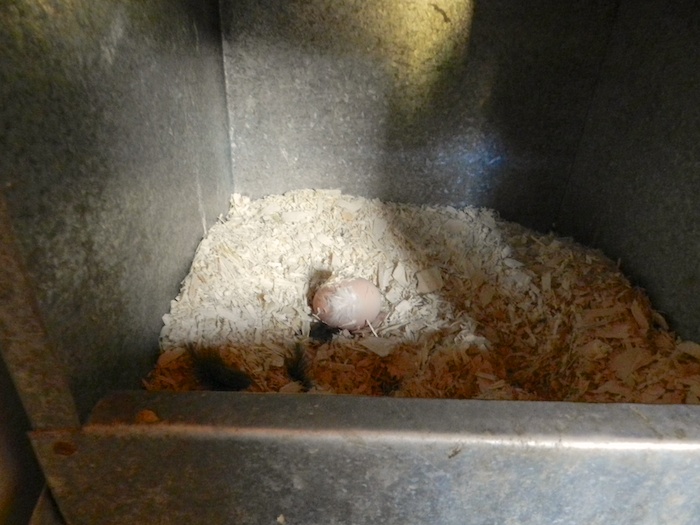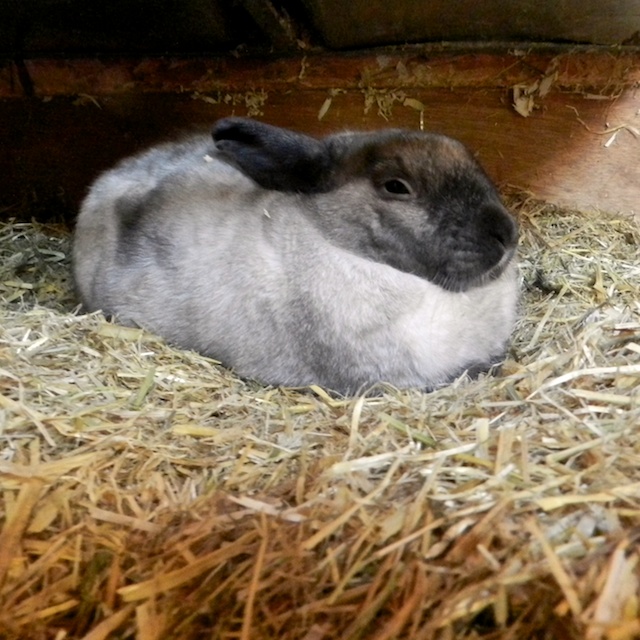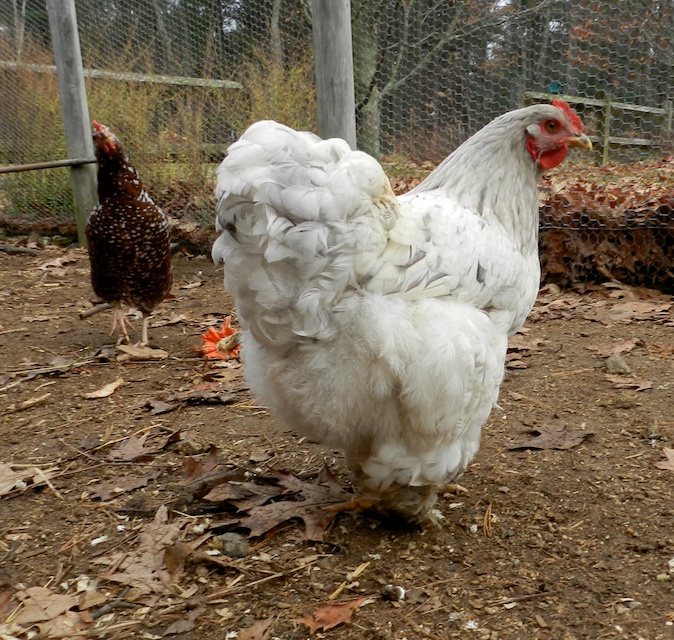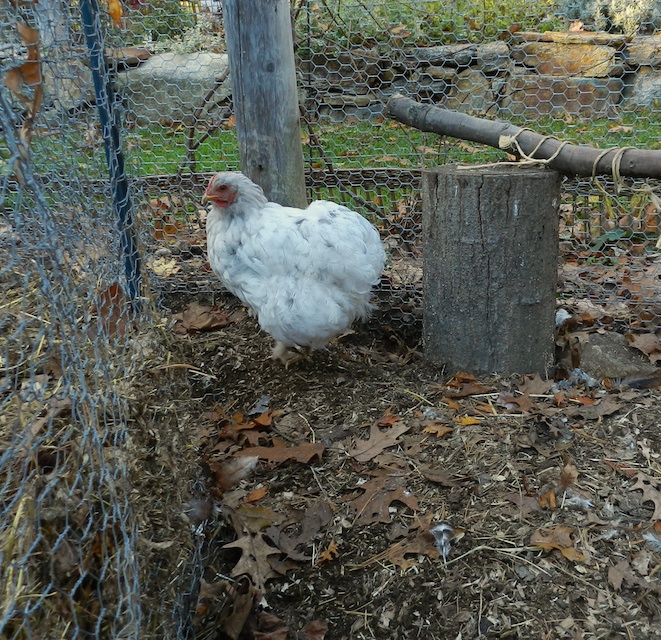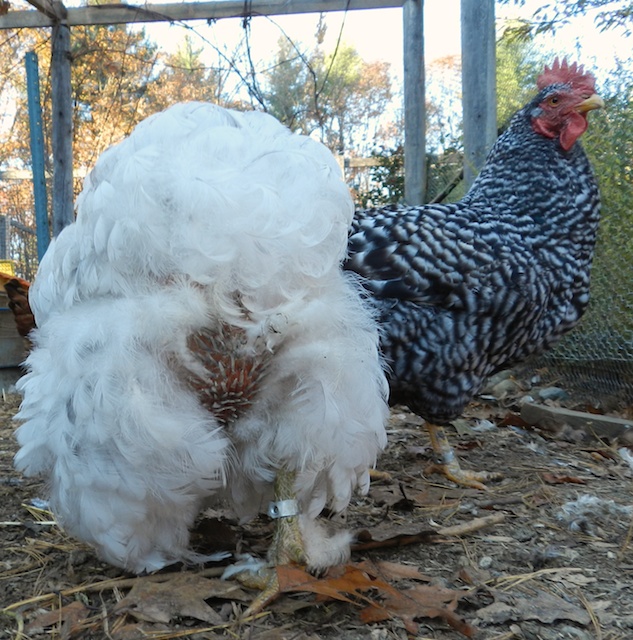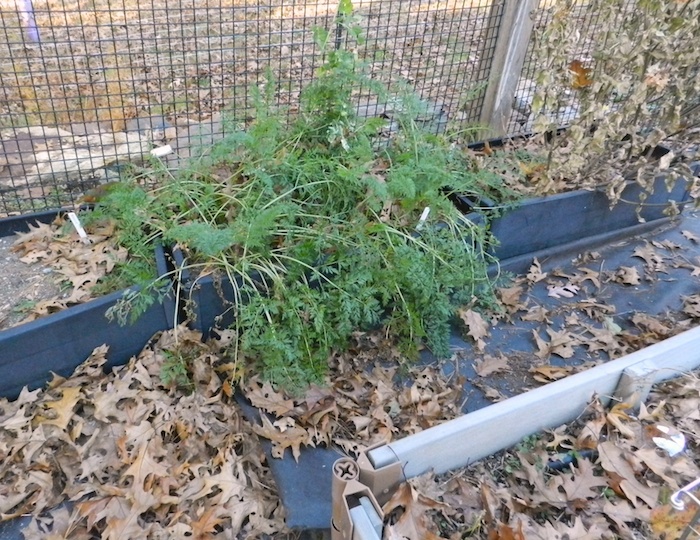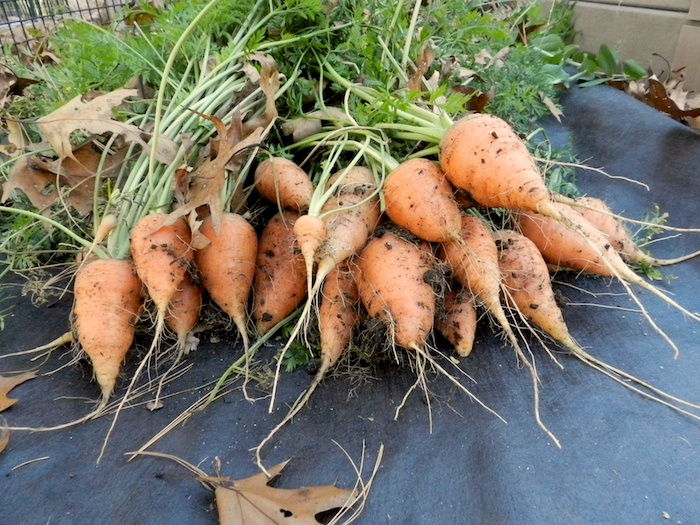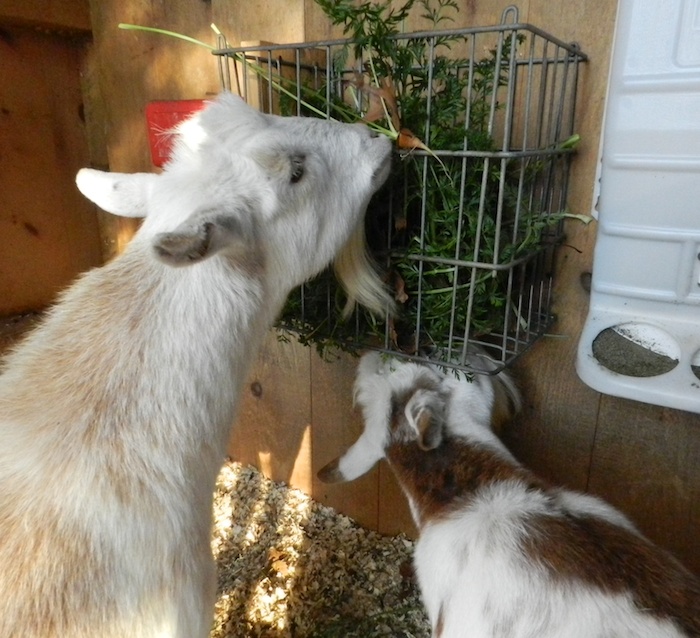Most chickens don’t have long lives (see my post about how long chickens live) but a few sturdy birds manage to survive respiratory diseases and escape reproductive tract malfunctions and live on into old age. Even then, they rarely die peacefully in their sleep. Old chickens are prone to tumors, cancer and blockages of their intestinal tracts. Internal layers that survive peritonitis can have large masses in their body cavities that will eventually interfere with body organs. I do necropsies, and have seen all of these things. All of these conditions can cause a hen to suffer, sometimes just for days, sometimes for weeks.
Then again, an old hen can go sedately along, with something obviously wrong (look at Twinkydink’s grey comb!) and yet still get pleasure from a sun bath and take part in the social life of the flock. An old hen like Twinkydink you can leave well enough alone.
If you intend to let your hens retire (and not dispose of unproductive hens as real farmers must do) then you will be faced with knowing when to let a hen live out her days, and when it is kinder to euthanize. This is a decision that I make on a daily basis about Buffy. She’s survived many ailments. At almost eight years of age, she is ancient and feeble. She can no longer hop out of the coop in the morning. I have to carry her to a spot in the sun.
But, Buffy is not yet suffering. I know this because of a few things that she still can do. Buffy can stand on her own and eat and drink. In fact, she continues to eat with gusto. A hen that is too weak to eat is truly ill.
Buffy is not harassed by the other hens, and in fact will peck at those who get into her space. The other hens recognize weakness, so although to my eye Buffy is wobbly, she has maintained her status in the flock. A truly sick hen will hide, or be attacked by others.
That said, it is clear that much is amiss with Buffy, She no longer has the strength in her legs to roost, which means she’s below everyone else at night. Sometimes she gets pooped on. Being a soft-feathered Orpington, the manure sinks down into her coat and sticks there, unseen. Yuck.
Being a weak old hen, Buffy can’t preen those feathers, and so today, using scissors, I carefully snipped off the manure.
I was concerned that Buffy was filthy in other places too, and so I gave her a warm epsom salt bath.
I was relieved to see that her bottom was clean and healthy. Her manure is normal, not runny and sticky. She had a few lice crawling on her, but it wasn’t the sort of infestation that happens to sick hens who can’t dust bathe.
Buffy was skeptical that all of this fussing was necessary.
It’s too cold to go outside with wet feathers, so I blew her dry, which she seemed to like. When done, she had enough energy to stand up and glare at me.
Buffy is at the end of her life. She cannot walk more than a few steps without sitting down. She’s skinny – it’s likely that her body can no longer efficiently digest the food that she does eat, and so I do give her a small handful of sunflower seeds and corn in the morning. (High value food, in a small amount, gives her a boost, however, do NOT feed your ailing hen with a syringe or force gruel into them. If a hen isn’t eating or drinking, there’s likely something blocking the passageways inside and you will make matters worse.)
But Buffy is not done yet. She eats her corn and sunflower seeds right up in the morning, and woe to anyone who wants to share! When Buffy is no longer able to stand, if her vent area becomes raw from diarrhea, if she becomes infested with lice, if she no longer eats and drinks, then I’ll know her time is up. I don’t want her to suffer, and sadly, many older hens do as they waste away at the end. I won’t let that happen to Buffy; I will euthanize her. For now though, she has a patch of sun to enjoy.
